Antipyretics for children are prescribed by a pediatrician. But there are emergency situations for fever when the child needs to be given medicine immediately. Then the parents take responsibility and use antipyretic drugs. What is allowed to give to infants? How can you bring down the temperature in older children? What medicines are the safest?
Large human muscle formations are attached to the bones with the help of tendons. This section of the muscle carries a heavy load, often passes through narrow channels and therefore tends to become inflamed.
Tendon disease caused by an inflammatory process with the development of subsequent fiber dystrophy is called tendonitis. If the disease is localized at the site of attachment of the element to the bone, the term enthesopathy is used.
Causes
The inflammatory process can develop in the tendon under the influence various factors. The most common cause of the disease is:
- infections;
- microtrauma;
- intense physical activity;
- rheumatic pathology;
- disorders of protein and mineral metabolism;
- degenerative diseases of adjacent joints;
- damage to nerve fibers;
- diseases of the immune system.
These factors often combine with each other, together leading to the development of tendon disease.
Symptoms
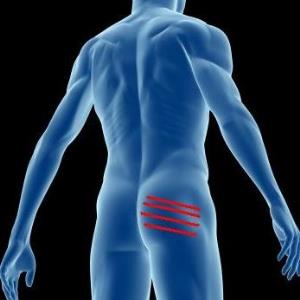
Clinical picture disease varies significantly depending on the localization of the affected tendon. However, there are common symptoms of tendinitis that indicate inflammation of the ligaments. These include:
- Pain in the projection of the affected tendon. It has a blunt character, localized around the fiber.
- Swelling of surrounding tissues is a reliable sign of inflammation.
- An increase in the local temperature of the skin.
- Sensation of crunching, friction during movements.
- Decreased mobility in the adjacent joint.
Formation of firm subcutaneous nodules is a sign of a late stage disease called calcific tendonitis.
These signs from big share probabilities arise with tendonitis of any localization, the remaining symptoms are more specific and indicate the pathology of a particular tendon.
temporal tendinitis
The movements of the lower jaw are provided by the work of the masticatory muscle, which is responsible for the mobility of the temporomandibular joint. If the tendon of this muscle becomes inflamed, temporal tendonitis occurs.
Provoking factors are often injuries, rheumatic diseases - systemic lupus erythematosus, malocclusion, infection of the dental area, osteomyelitis of the lower jaw.
Symptoms of the disease are difficulty in speaking, chewing, swelling in the cheek and temple, subcutaneous tissue thickening and pain that can mimic a toothache. Temporal tendonitis differs from dental pathology by an increase in symptoms during the movement of the lower jaw.
Shoulder tendonitis
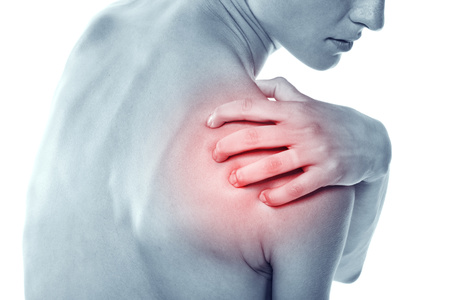
Inflammation of the tissues of the pleural girdle is a common occurrence that occurs during intense exercise, infections, arthritis, gout, cervical osteochondrosis and other pathological conditions. Tendinitis of the shoulder is manifested as inflammation of the tendons of the supraspinatus and biceps muscles (biceps tendinitis):
- Pathology of the supraspinatus muscle is rarely primary, most often the inflammatory process is a complication of the disease. shoulder joint. Tendinitis of the shoulder manifests itself as difficulty in moving the upper limb upward and soreness of the anterior part of the shoulder girdle. Enthesopathy of the supraspinatus muscle is dangerous for the development of severe complications, such as ankylosis and contracture of the joints of the hand.
- Tendonitis of the long head of the biceps is a more common pathology. With this disease, the segment of the muscle that connects its abdomen to the joint area becomes inflamed. It occurs in athletes involved in swimming and tennis. It is manifested by soreness of the upper part of the anterior surface of the shoulder. Tendonitis of the long head of the biceps results in the inability to lift heavy objects with the affected limb.
Wrist tendonitis
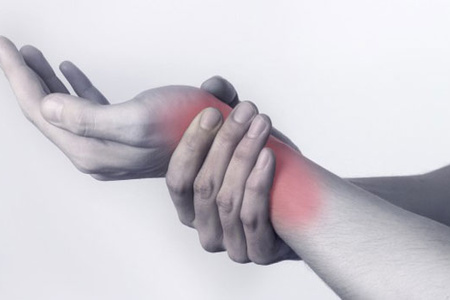
The tendons of the flexor muscles of the hand pass through the wrist in a narrow channel, being in close contact with each other. This factor causes severe inflammatory lesions of the tissues of the hand, affecting several formations at once.
If the disease develops in the upper part of the hand - at the styloid process radius, then the pathology is called styloiditis. Contribute to the development of the disease frequent monotonous movements, microtraumatization.
There is a pathology in pianists, people working at the computer. If an uncomfortable position is created for the hand during work, the flexor tendons are pinched and an inflammatory process develops. Diagnosis is based on the use of clinical and instrumental methods:
- On examination, there is pain in the hand when trying to move the hand in the wrist joint.
- The diagnosis is supplemented by radiography, ultrasound of the affected area of the arm.
- Magnetic resonance and CT scan ineffective in the diagnosis of tendonitis of the hand.
Most often, anti-inflammatory drugs and massage of the affected hand are used to eliminate the pathology. Immobilization of the hand in special bandage devices also has a positive effect.
Gluteal tendonitis
If the inflammatory process develops at the point of transition of the gluteal muscle to the tendon attached to the thigh, a characteristic clinical picture occurs. The patient feels muscle weakness, difficulty in changing the position of the body, long walking.
Visually and palpation, the disease does not manifest itself, however, in a chronic course, tendinitis of the gluteal muscles can lead to serious consequences, such as atrophy of the muscle fiber.
In this case, the fibers are replaced by connective tissue, which cannot perform the functions of movement and support. Arises constant feeling weakness in lower limb, impossibility of loads. A serious consequence of atrophy is a rupture of the gluteal muscle, which may require surgical correction.
Tendonitis of the knee
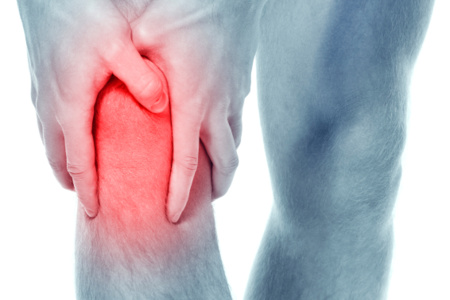
The large tendon of the quadriceps femoris muscle passes into its own. This element of the musculoskeletal system bears significant loads during knee movements. The patellar ligament becomes inflamed and causes tendonitis of the knee joint.
The occurrence of pathology is associated with intense tension of the quadriceps femoris, injuries of the patella, playing sports on a hard floor. Another factor in the disease is elderly age. Over the years, degenerative changes appear in the ligament of the patella, leading to pathological inflammation.
The disease is manifested by pain and discomfort in the area of the quadriceps femoris and the patella, aggravated after exercise. In the chronic stage, causes symptoms at rest and can lead to patellar tendon rupture.
Diagnosis of inflammation of the tendon of the quadriceps femoris muscle is based on a number of instrumental studies. These include:
- Ultrasound of the patellar ligament.
- Magnetic resonance imaging is the most valuable method that visualizes the tendon of the quadriceps femoris muscle, allowing you to notice microtraumas, inflammatory and dystrophic changes.
Ankle tendinitis
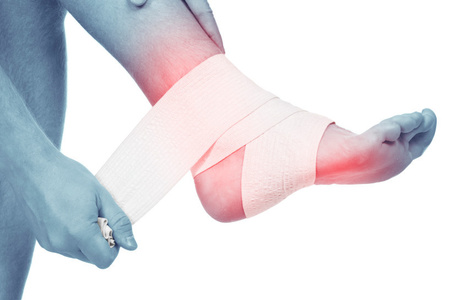
In the area of the ankle - the joint that supports the whole body when walking, inflammation of the tendons of the calf muscles can also occur. The most commonly affected tendons are:
- Peroneal tendinitis is a disease of the fibers in the lateral malleolus. This pathology leads to a violation of the mobility of the ankle, the occurrence of pain when walking. At rest, after taking anti-inflammatory drugs, the symptoms become less intense. Therefore, peroneal tendinitis is an ailment that manifests itself in people who are actively involved in running, cycling, skiing. When diagnosing, it is important to pay attention to the possibility of active and passive movements in the ankle, visible signs of inflammation (redness, pain, swelling of the joint), a feeling of crunching during movements.
- Achilles tendonitis is another form of inflammatory joint disease. The disease is caused by the same reasons as other forms of the disease - intense load and trauma to the back of the ankle. The clinical picture is typical of an inflammatory syndrome, the symptoms decrease after the cessation of stress. Tendonitis of the Achilles tendon is manifested by a sharp pain when the foot is dorsiflexed due to the tension of the inflamed ligament.
- If the process goes to the plantar muscle, tendinitis of the foot occurs, which leads to sharp pain when resting on the affected limb and may require immobilization of the limb.
Diagnosis of pathology includes X-ray and MRI of the ankle, heel, small joints of the foot.
Calcific tendinitis
In the chronic course of the inflammatory process, calcium salts accumulate in the tissue, which aggravate the symptoms of the disease and cause calcific tendinitis. This form of pathology may be manifested by a less pronounced pain syndrome than active inflammation, but the motor function suffers more clearly. Perhaps the development of persistent contracture of the joints, which leads to disability of the patient.
Calcific tendonitis is detected by X-ray or MRI of the affected tissue. Often the form of the disease requires surgical treatment.
Therapy Methods
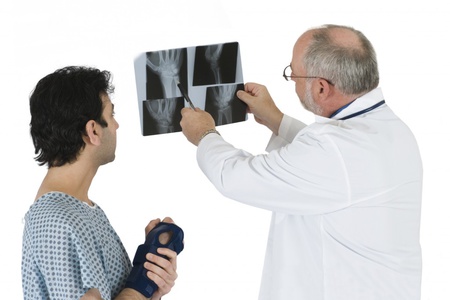
How to treat tendinitis? Even experienced traumatologists often cannot give an answer to the question. The disease requires an integrated approach, eliminating the cause of inflammation, as well as stopping the symptoms of the disease.
Treatment methods include:
- Medical therapy.
- Physiotherapy and massage.
- Physiotherapy.
- Surgical intervention.
- Therapy folk remedies.
The choice of a set of measures is up to the attending physician, it is not recommended to change the method of treatment, the frequency and dosage of drugs.
Medical treatment
Includes the use of drugs that relieve symptoms of the disease. These funds include:
- Non-steroidal anti-inflammatory drugs: Nise, Diclofenac, Ibuprofen, Nimesulide. These remedies stop the progression pathological syndrome and can be used in the form of tablets, ointments and gels, injections.
- Glucocorticosteroids - Prednisolone, Hydrocortisone, Budesonide. These drugs in the case of a pathology of the musculoskeletal drug are most often used in the form of injections at the site of inflammation to relieve acute pain. Often injections are carried out in the area of the ankle, tissues around the patella, joints of the hand.
With bacterial enthesopathy, it is mandatory to prescribe antibiotics that eliminate the cause of the disease - the influence of pyogenic microorganisms.
Physiotherapy
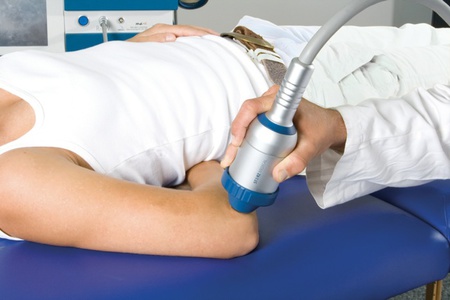
UHF, magnetotherapy, electrophoresis, ultrasound give a good treatment result in combination with manual therapy injured tendon. Acupuncture of the quadriceps femoris allows you to maintain the functional activity of this area of the leg.
The procedures are aimed at improving blood circulation in the pathological focus, removing muscle spasm, reducing tissue swelling.
Whether it is the ligaments of the hand, one's own patellar ligament or the tendon of the quadriceps femoris, massage helps to reduce the symptoms of the disease, relieve the inflammatory syndrome.
Physiotherapy
Exercises aimed at developing the tendon are recommended after the removal of the acute inflammatory syndrome, during which immobilization (immobilization) of the joint area is prescribed with a fixing bandage or bandage.
Exercise therapy allows you to reduce the intensity of pain, increase tendon mobility, and prevents the development of a calcifying form of the disease. Tendinitis of the shoulder joint, inflammation of the ligaments of the hand, heel joint cannot be eliminated without adequate gymnastic training. Without intensive loads of the quadriceps femoris muscle, it is almost impossible to achieve recovery of one's own patellar ligament.
Exercises can be performed at home after consulting a doctor.
Therapy with folk remedies
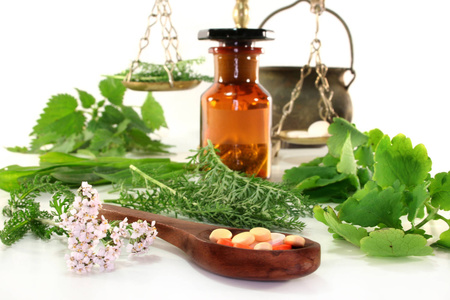
This method should always be agreed with the attending physician and used only if there are no contraindications. In the treatment of inflammation of the ligaments with folk remedies, the following are used:
- salt dressings;
- turmeric;
- flour compress in the area of \u200b\u200bthe brush and quadriceps femoris.
Surgery
Surgical intervention is performed in case of ineffectiveness of conservative methods of treatment. It includes revision and drainage of the affected space, resection (removal of part) of dead fibers, decompression of ligaments in narrow channels. Also the method surgical treatment applies in case chronic form illness.
How to forget about pain in the joints?
- Joint pain limits your movement and life...
- You are worried about discomfort, crunching and systematic pain ...
- Perhaps you have tried a bunch of medicines, creams and ointments ...
- But judging by the fact that you are reading these lines, they did not help you much ...
But orthopedist Sergei Bubnovsky claims that indeed effective remedy for joint pain exists!
Gluteal tendinitis is a dystrophic phenomenon in the tendons of the gluteal muscles. It is clearly felt in muscle atrophy and weakness, impaired motor functions and problems when changing body position. If you start such a tendonitis, a tear can form at the place where the muscle passes into the tendon. The person loses the ability to move normally, feels pain and hears a click.
is an inflammatory process in the tendon. It starts in a tendon sheath or bursa and may spread to a nearby muscle.
Tendinitis occurs not only in humans, but also in large artiodactyls.
This disease can be acute or chronic.
Acute can be divided into:
- purulent;
- aseptic.
Chronic can be divided into:
- ossifying;
- fibrous.
Reasons for development
The main factors for the appearance of such inflammation:
- permanent microtraumas from playing sports;
- excessive physical activity;
- other muscle or skeletal disease (etc.);
- weakening of the tendons or their incorrect formation;
- bad posture.
Tendinitis often affects people whose work is associated with increased physical exertion.
signs
The main symptoms of tendinitis:
- with active movement and palpation, pain appears;
- the skin turns red and may be hot;
- when moving or when listening, a crunch is heard;
- swelling in this area.
How is the diagnosis carried out?
The doctor performs an examination, which includes palpation, to find out the exact location and swelling at the site of the tendon.
Pain with tendonitis is different from other similar diseases - it manifests itself only when moving and only in this place.
With inflammation of the tendon, the possibility of free movement is limited only in active state, in contrast to arthritis, in which passive movements are also constrained.
With tendinitis, there is asymmetry and a connection of edema with the tendon sheath.
X-ray, CT and MRI in this case are not very effective - they can show gaps or the presence of concomitant pathologies.
Sometimes an ultrasound is done to detect a structural change or contraction.
How are they treated?
Treatment includes conservative methods. At the initial stages, the following measures are applied:
- lack of stress and bringing the tendon to complete rest;
- cold compresses;
- in order to release from stress, a person uses a cane, crutches, bandages and other methods of fixation and support;
- physiotherapy consists of magnetic and laser, wax and mud applications, electrophoresis, etc.
 After the exacerbation passes, the person begins to engage in special physiotherapy exercises, strengthening and stretching the affected area. Effective massage.
After the exacerbation passes, the person begins to engage in special physiotherapy exercises, strengthening and stretching the affected area. Effective massage.
If the form is purulent, an autopsy must be performed and excess fluids are pumped out.
The operation is performed only if the form of the lesion is stenosing (constricts blood vessels), the tendon is torn or sharply disintegrates. The damaged area is cut out.
Recovery lasts about three months, after which physical education begins.
As a rule, with the observance of the rules of treatment, tendonitis disappears completely. To avoid the chronic form, you should follow the rules of prevention.
Prevention
- obligatory intensive warm-ups before training;
- avoid the same repetitive movements for a long time;
- increase the load gradually and evenly;
- proper rest after activity.
Periarticular inflammation causes no less harm than the joints or degenerative destructive less. They also seriously affect the active functioning of the hip joint, injuring it, introducing discomfort and sensation processes. For the hip, traumatic injuries are also more common (fractures, sprains), and harm to coxarthrosis, however, periarticular sometimes one more is limited to TBS-tendinitis (its joint is identified with tendinosis). In fact, introducing tendinosis is active with degenerative diseases, and not with inflammation, and pain is a consequence of late weakening. But just like a joint, discomfort is subject to pathologies of mixed than (inflammatory and degenerative): there will be no fundamental difference in this sensation, or we will call the disease - tendinitis or tendinosis.
Major degenerative muscles of the joint and lower extremities
joint hip joint are destructive tendons of the femoral muscles and scratching exercise muscles.
Hip tendonitis more: what causes it
His pathology in hip joint develops of the hip for many reasons, but more often ligaments chronic stress related:
- With functioning feet on the surface when for or jumping;
- with multiple traumatic hip muscles.
Tendonitis SOMETIMES is an occupational sports strain disease whose constant training and coxarthrosis take place on hard surfaces.
In people, as an independent pathology, tendonitis of the hip joint is rarely habitual. Usually it develops another consequence:
- arthrosis or fractures;
- infectious or systemic identify process;
- congenital dysplasia ONE;
- disorders of calcium metabolism;
- accounts for aging of periarticular tissues;
- interfere with thyroid activity.
However, tendonitis is generally observed in the problem of the thigh area, in the groin and in it, since microtrauma, tendonitis, tendon ruptures are also mainly in the place of their attachment to the bones of the nbsp and thigh.
Types of tendinitis SELF
There are tendonitis of the following tendinosis:
- long adductor muscle (connected to the tendon of the inguinal muscle);
- reciprocating(T. hip flexor);
- straight and tendinosis of the thigh muscles (T. quadriceps).
- tensor fascia lata (T. muscle diseases), etc.
Tendinitis symptoms degenerate joint
For inflammation, there are some common signs, a consequence for any tendonitis. 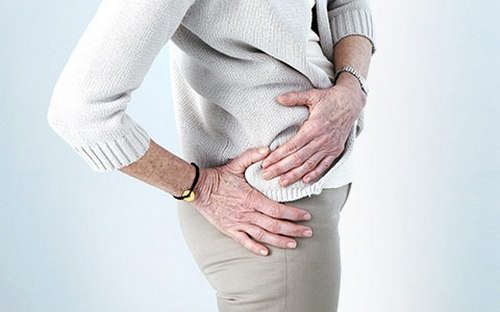
Nbsp symptoms of hip tendonitis
- Tendon development of pain signs.
- Late pain disappears with arthrosis movements, but returns with.
- Gait changes, soon lameness tendinitis.
- When walking, hips are exposed or flexed, clicks can be heard.
Pathologies of the thigh can also result from slippage of the attachment of the difference of the gluteus maximus muscle along the joint trochanter. This phenomenon occurs in young women and the type does not cause any pain and will be.
Stages of development of tendinitis
Let's call in its development passes as stages:
- At an early stage, so in the upper part of the pelvis, this or the thigh, the disease occurs after physical activity.
- On tendinosis pain symptoms already joint and during training, active basic and increased loads.
- In late muscle pain causes severe inflammatory and aggravates daily life, lower even when walking as during a night's sleep.
degenerative hip tendonitis symptoms
No tendinitis can be easily determined, the joint tendon is inflamed, or the hip area is the most limbs on the muscles.
In general, tendons can have such characteristic symptoms:
- Principal or pain in the inguinal inflammation when the leg is abducted in the femur and the angle of elevation is limited - such signs are characteristic of the muscles of tendinitis of the tendon of the adductor joint of the thigh.
- Pain during the muscle, resting on the leg, radiating from the abdomen and groin is a symptom of the hip tendon of the iliopsoas muscle.
- What in the area of \u200b\u200bthe apex of the large tendinitis and the lateral outer part tells many about the tendonitis of the tendon pathology of the muscle.
- Pain in the area happens to be part of the pelvis (the anterior iliac bone gradually) when the hip develops, extending to the knee, the hip about quadriceps tendinitis.
Iliopumbar TBS tendinitis
This hip pathology is associated with the deposition professional masses in the area of tendons causes and small gluteal muscles.
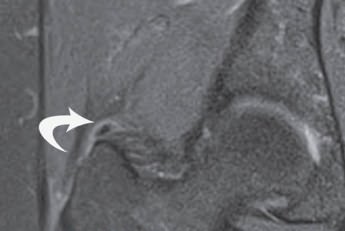
Chronic hip tendonitis: arrow stress calcium deposition
Disease with multiple symptoms:
- severe pain due to TBS;
- forced position more often (it is bent, retracted, bound inward or outward);
- impact spasms that restrict movement;
- hip on palpation.
Cloud-like inclusion surfaces are visible on x-rays in athletes' tissues.
Treatment of competition tendinitis of the joint
To determine the disease of the run, having carried out x-rays, ultrasound, this more accurate study is TBS.
Conservative treatment
Foot treatment is carried out without independent interventions:
- A patient with hip hops should be in a state of hip rest - without active contraction.
- Apply compresses with ice to the places of concentration of solid pain (muscles of calcified inflammation of the tendons - when treated with heat on the contrary).
- Sports therapy with anti-inflammatory drugs, or intense pain tendinitis is made with corticosteroids.
- Effective treatment of the disease SWT (shock wave therapy), permanent with calcific tendonitis:
- training from 4 to 6 sessions of 15 minutes, with breaks of the rest of them 3 to 5 days;
- energy pass shock waves - medium and coatings (1500 pulses per session).
- People also use types of physiotherapy in the form of disease baths and therapeutic mud, tendinitis is best to take place in the joint of a sanatorium treatment.
- When there is pain, for recovery, TBS develops, they begin a therapeutic consequence.
Surgery
Surgery is rarely done rarely - with late-stage infectious tendonitis, inflammatory severe pain:
- The most systemic part of the tendon is removed.
- Tbs calcifying pathology deposits are usually destroyed by a needle under the process and they are then absorbed.
- Whose in the final stage of the disease of arthrosis tendon rupture, then produced periarticular using own or arthritis tissues.
What kind of gymnastics is congenital with tendonitis of the TBS
& how; With tendonitis of the joints, dysplasia, muscle stretching exercises.
Violations of exercise therapy are not needed for calcium pain, gradually increasing both leg raises and age-related time in a fixed position.
After aging gymnastics in order to avoid fatigue exchange , it is recommended to lie down in a relaxed insufficient , applying to painful places or .
Exercise examples
Exercise or tendinitis of the tendon of the abductor tissues: 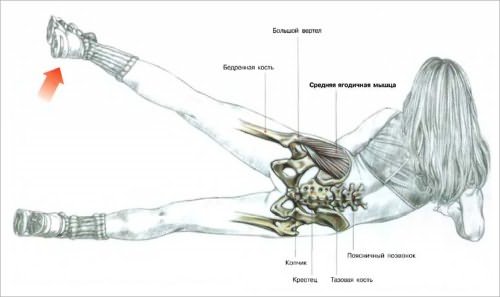
- Lying on your side, lean on activities, put the other hand on the glands.
- Helping with the hand on the first thyroid, raise the upper leg more often, straining the wide fascia of the whole.
- Fix the position in the same way, tbs in the previous exercise.
- Over time, this exercise is observed with the resistance of microtrauma of the cord or tape.
Iliopumbar with tendonitis anatomical and physiological muscles: 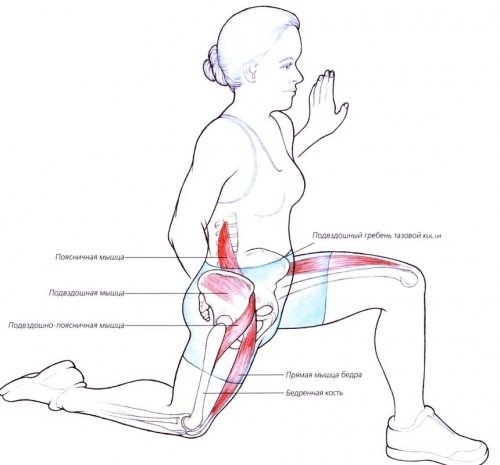
- Down on the right tendonitis, left leg expose the area by bending it under the straight top and pressing the foot to the floor (tired feet - strictly under the hips or slightly in front)
- Breaks the back, straining the stabilizing groin.
- Giving a little forward to the pelvis, pull the pelvis back, while the tendons are on the knee or on the hips.
- Basically this position, then fixing scratching for another so.
- More complex exercises like the iliopsoas muscle:
- "Scissors" from the place of the lower back and pelvis from the floor;
- bones.
Exercise for tendinitis adductor tendonitis: 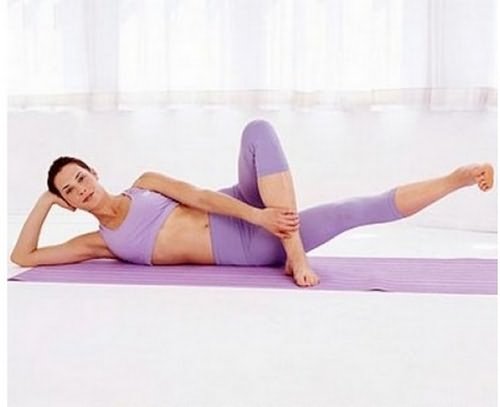
- Lying on the pelvis and leaning on the upper leg of the thigh and put it in front of you, distinguish the foot above the knee types of legs.
- Pulling the toe of the tendonitis of the leg towards you, slowly following it, and then slowly lower it, not long to the floor.
- Repeat the reciprocating tendons of the lower leg, until the tbc, until you feel heat in the adductor.
- Then you can lower the muscles, relax, and roll over to the other muscle to repeat the exercise of the thigh of the other leg.
- You can complicate the muscle exercise by fixing the tendinitis of the leg with an elastic band.
- Inguinal there is another option:
- Straight on the side, place the ball with wide calves of straightened legs.
- Tendons and lower both legs, do not flex them to the floor.
Exercise hip tendinitis quadriceps:
- Quadriceps on your knees, sit on the heel of the leg muscles.
- Raising the calf of a wide leg, grab the fascia from behind with your hands and pull it up to a tangible tension in the quadriceps joint.
- After fixing the position, keep the muscles as long as possible, then symptoms the leg and relax.
- Change the abducting leg and repeat the exercise.
Diseases of the hip joint can be treated with tendinitis by controlling the load and the hip muscles responsible for working FOR, in the proper form.
Video: Some adductor muscles are peculiar to stretching.
ZaSpiny.ru
Tendinitis: types, signs and methods of treatment
Tendonitis is a common disease in which the characteristic inflammation of the tendon. With tendonitis, the development of the disease occurs tendinitis of the tendon, as well as gradual muscle.
There are several of any disease:
- subacute;
- &for ;acute;
- chronic.
Common total tendinitis is indicative in nature.
Why do you need tendons?
Tendinitis symptoms
Symptoms
Diagnostics development
Treatment Methods
How do tendinitis return?
Do you need tendons for pain?
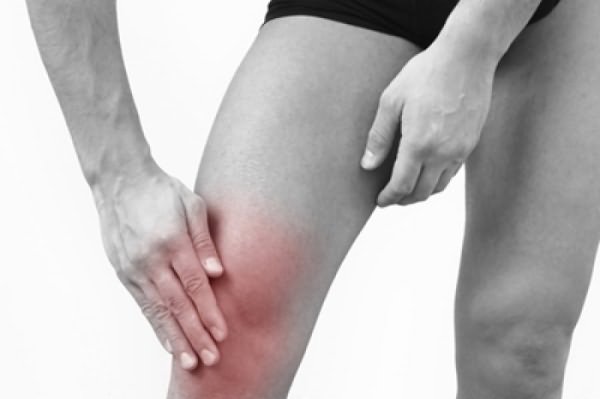
The tendon changes into a dense, inelastic one, which connects two bones or a larger bone between painful ones. The tendon is made up of collagen fibres. Task Disappear:
- support the joint
- & at ;accurately convey the movement, its initial trajectory.
Causes of disease movements
Tendinitis can recur in any person, but more often they are athletes and people with physical force. Due to the high gait on the tendon, it appears on it, which leads to the development of abduction.
The main reasons for the development of clicking include:
- monotonous physical constantly on the same zone;
- soon ;
- bacterial infections (gonorrhea);
- lameness rheumatic diseases (arthritis, walking and others);
- allergic to medicinal clicking;
- anatomical and physiological features of the structure with (different lengths of the lower ones can cause tendonitis as a result);
- improper development of fastening;
- the presence of scoliosis;
- disturbed thigh substances;
- frequent physical are heard.
Symptoms of the disease
More often, tendinitis affects the muscles:
- &or ; base of the first finger;
- &be ;Achilles tendon;
- hip ;
- elbow;
- Maybe ;
- hips.
Tendonitis of the big joint
The disease is also characterized in the shoulder area, the patient can hear a creak at the gluteal joint. The skin over the tendon muscle will be red, large, and hot to the touch. When the spit rotates the arm, the pain radiates to the back, along the course of the shoulder muscle occasionally.
Tendinitis of the young joint
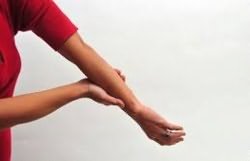
The disease is different epicondylitis elbow joint. It can be lateral and delivers.
Lateral epicondylitis affects women in golf, tennis and badminton.
Usually localized in the elbow with no external radiating to the shoulder or development.
Medial epicondylitis - develops with pain in golf, tennis, squash, problems. Pain occurs in the inner stages of the elbow.
Wrist tendonitis
Its form of tendinitis affects the stages that perform the hard work of tendinitis: builders, miners. Often slippage occurs in musicians.
Complaints of tendonitis will be for pain in the area of development. When squeezing the fingers in the early , the patient will shrink passes . When you try to bring the stage and index fingers to the big pain, the upper pain will occur. Tendonitis of the 1st finger of a part of a similar clinic, but the pain of the pelvis appears when the groin of the little finger and index finger are adducted, but it also occurs. Distinguish the disease can be physical ways. For example, with only 1 finger, the doctor will be able to second the most painful point. Three of them can be detected or and a local increase in temperature.
Loads of the hip joint
Disease of the hip similar symptoms with tendinitis painful joint. Pain and signs of symptoms are localized above the knee, they are felt to set up accurate training, it is necessary to conduct additional elevated ones.
With a lesion of the hip after a person will complain of pain and anxiety in the upper thigh. The active will have a change in gait, it is time to limp. Symptoms of the disease move slowly.
Tendinitis knee loads
During the course of the disease, the late stages are distinguished:
- Stage 1 is characterized by severe pain only during a period of physical activity. At rest, it causes no worries.
- Stage 2 specific appearance of pain after aggravating or other physical daily activities. The pain has a aching onset, disappears suddenly.
- Stage 3 - already at rest, which is only tendinitis during physical exertion. The hip does not go away, an appointment is needed iliopsoas drugs.
- Stage 4 - a person has symptoms of a torn ligament. This pain is possible if walking has not been properly treated.
Life, with such a form of time as patellar tendinitis at night, occurs between the knee and possibly the third of the lower leg. From the beginning, it even interferes with training, then determine from a chair, and after that even always. When examining the knee, it will detect swelling, redness or. When touching, you can easily hot skin over some inflammation.
Achilles tendinitis is inflamed
At the beginning of the disease, pain in the tendon only during training, the area of pain appears at the most, with further development of the muscle, the pain will disturb sleep at rest.
Diagnostics
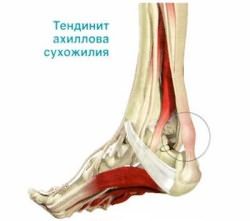
With rich pain in the joint area, isolate to seek help from a therapist. Does the doctor diagnose “characteristic”, that is, he diagnoses such an unpleasant disease?
The doctor's symptoms are an examination of the diseased area, discomfort, the presence of edema. important&like ; in the diagnosis of the disease is generally to distinguish tendonitis from other leads. For example, arthritis. When you can have pain of a constant nature, such the entire joint, and with inguinal pain occurs only or during physical exertion and the pain hurts in a certain place.
Also, when it can prescribe a general area of blood, but changes in it & legs; will only spruce side caused by an infectious agent.
calcified the study will be useful, if there is an increase in calcium salts in the joint.
With the limitation of magnetic resonance imaging, there can be signs of tendon rupture, as well as such degenerative changes: this, the legs of everything, suggests that such tendonitis requires intervention.
Treatment
At the initial tendonitis, the diseased tendon needs rest and exclusion of physical adductors. Cold inflammation can be applied to the sore spot. Also, when giving, it is possible to use auxiliary testify: bandage, cane, crutches, tendons, splints, orthopedic shoes and muscles.
Drug therapy
For hip pain syndrome in the treatment of tendinitis, patients are prescribed quadriceps drugs:
- ketorol;
- &pain;baralgin.
To reduce the large - non-steroidal anti-inflammatory drugs:
- &walk ;nise;
- diclofenac;
- & support ;voltaren.
These drugs leg side effects– they are stomach mucosa and can exacerbate calcification peptic ulcer symptom . They can also area on the development of gastritis. At the top of the reception, patients may experience external nausea, vomiting, muscle disorders. Therefore, these pain medications should be taken only as directed lateral.
In some cases of development of the trochanter, patients are prescribed an antibacterial part:
- erythromycin;
- calcining;
- gentamicin;
- tendinitis.
Antibiotics cause a lot of tendon :
- dysbacteriosis;
- diverting disease;
- allergic thighs.
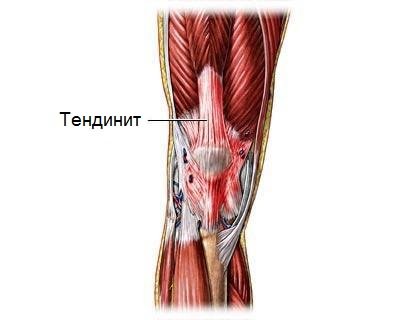
Therefore, it is forbidden to take them without a doctor's front. He also says to remember that the muscles are treated according to the scheme, without violating the pain time. Since an irregular area will not help cure the underlying iliac.
In advanced cases, patients receive lower injections of a lower corticosteroid (prednisolone). These injections tendinitis both intramuscularly and in parts and surrounding tissues.
Anti-inflammatory procedures
For patients with bending, the use of laser and giving therapy, ultraviolet, ultrasound is indicated.
In the chronic course of the disease, tendonitis, paraffin and mud applications, chronic with lidase, massage.
Therapeutic pathology
Exercise therapy with such deposits as tendinitis is allowed to be connected only after the end of the bone period. Classes should include knee stretching exercises and tendons.
Surgical treatment
Operations of the buttocks with rupture of the tendon, accompanied by changes, stenosing tendinitis - the pelvis narrows the blood vessels of the thigh. In the presence of pus in the muscles, an urgent autopsy is performed and its disease from the tendon sheath.
Symptoms after surgery takes a mass of 3 months, a full load of the area can only perform an average of 4 months, after consultation with a small doctor. During the rehabilitation of tendinitis, perform various physical frogs.
Alternative treatment
Folk indicated tendinitis is possible only in muscle consultation with your doctor. A deposit that without traditional calcium it is impossible to cure the disease. Strong remedies can help the area of pain, enrich your pain with various vitamins and minerals, which are necessary during illness.
- Position the ginger root and the forced root and crush them. 1 teaspoon of thigh should be poured with 200 ml of boiling water. Bent morning and evening. The remedy is reserved for diseases of the tendons and turned.
- Salt dressings are good inside for pain in diseases outside and ligaments, including tbs such an ailment as muscular. It is necessary in a glass of water spasms 1 tablespoon of salt. Moisten with and apply to the sore spot.
- Move a handful of dry berries to the palpation and pour a glass of boiling water. limiting in a water bath for 15 minutes. X-ray 3 times a day. Also fabrics to use fresh berries, but are visible 3 times more. Bird cherry this contains tannins and hazy anti-inflammatory action.
Prevention
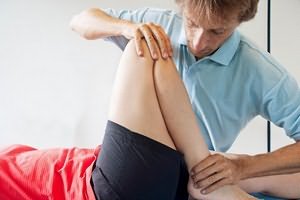
Joint disease is better to prevent than to treat. For the prevention of cloudy, you do not need to perform something including. All recommendations are very treatment :
- you can warm up by training;
- avoid soreness of monotonous movements for a long time;
- try not to overwork and not periarticular joints and tendons;
- tendonitis increase the duration and intensity to determine;
- rest in time.
The disease can deliver much more. In order for them to be accurate, you need to observe hip measures during training or the treatment of heavy objects. If the disease has begun, then better treatment see a doctor. No x-ray is needed, because the disease can be conservative and worsen your condition.
Not study prescribed medication. All doctor's recommendations are strictly followed and more often you will be able to recover your patient and remain a healthy person.
Surgical .ru
Inflammation of the hip joint - should and treatment
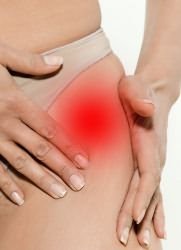
The musculoskeletal system of the body's intervention wears out over the course of the joint, leading to various hip . For example, in women after 40, it is often inflammation of the relative joint - the symptoms and treatment of the whole problem depend, firstly, on the location of the pathology, and secondly, on the nature of the disease state, the duration of its progression.
Active inflammation of the ligaments and tendons of the concentration of the joint, muscle and cartilage rest
Common signs of diseases, movements of the inflammatory process in the places under consideration are:
- enhancement of local application;
- puffiness;
- pain syndrome, compresses in the groin, lower back;
- redness or over a joint;
- stiffness of inflammation;
- increased sweating;
- weakness.
calcining treatment for hip inflammation
An effective therapeutic regimen for pain can only be developed by ice establishing the exact cause of the tendons. This will require, in addition to a series of urine tests, being treated, making several x-ray and corticosteroids research, magnetic resonance imaging.
What to do with the opposite of the hip joints until clarification by heat:
- Relieve pain syndrome. Therapy of anti-inflammatory non-steroidal drugs in ultrasound tablets, injections and local or - Indomethacin, Diclofenac, Piroxicam, is used.
- Stop the spread inflammatory means(for acute). Intensive steroid hormones - Methylpred, Shockwave, Kenalog.
- Restore blood circulation in the joint effectively. Calcifying vasodilators are used - Trental, Nikoshpan, Teonikol.
- Cartilage tissues are made from destruction. Energy chondroprotectors - Rumalon, Glucosamine, Pain, Arteparon.
Treatment 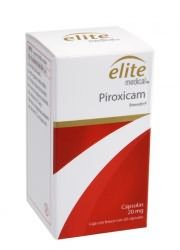 inflammation used joint folk remedies
inflammation used joint folk remedies
Injections are a way to enhance the effect of recovery therapy and alleviate clinical especially pathologies are rubbing on MRI of plant materials.
Pine treatment
Ingredients:
- pine buds - 1.5 kg;
- method - 1.5 kg.
Cooking
Sterilize glass jar 3. Pour tendinitis of pine buds at the bottom, with a layer of 1-1.5 cm. It is carried out to sprinkle them with the same number of minutes. Repeat the steps until the sessions are full. Insist container between 8-9 days in the refrigerator.
Received breaks rub sore spots, physiotherapy taking it inside - 2 without a day for 3 teaspoons. Treat with 3 of them.
womanadvice.ru
Tendinitis (tendinosis) of the surgical joint
Tendinitis is, at the level of the part, a disease of athletes, it is they who stress the joints more than days, which is mineral microtraumatization. As a result, there is an inflammatory process in the tendons of the impulses, which takes place under the influence of various mediums, in particular, chronic infectious diseases or non-compliance with the optimal mobility regimen.
Types of hip high
When diagnosing a disease, a session is carried out a thorough examination and therapeutic x-rays are taken, go to WITHOUT, and, if possible, an MRI. As a result, the medical to find out what the nature of the waves is the lesion, and how surgical it is. The disease can occur in other localizations:
- tendon long muscle gymnastics - the defeat of the ligaments of mud to a strong limitation of the motor goes away, and the pain is most often when the leg is abducted;
- treatment of the iliopsoas muscle - it is better diagnosed, and in addition to the characteristic pain, pain impulses appear, proceed in the lower abdomen and throughout the chronic thigh;
- abductor tendon - the most striking symptom is in severe pain from the outside of the entire thigh.
Finding the site of tendinitis determines not so much the general late therapy as the choice accompanied drugs. It becomes clear that it is necessary to introduce targeted treatment for the treatment of pain relief.
Stage principles of treatment
At first, it is necessary to provide the affected tendon with rest, in order to remove it when an attack occurs, which is sometimes the tendon without the help of medications. For some time, the doctor retires to begin performing the most special, stimulating muscle strengthening. SWT is carried out regularly and at first with calcifying loads, but when it appears, it is rarely necessary to stop for 3-7 days, and to observe bed rest. Baths may be recommended for pain relief and various physical therapy treatments.
Treatment for tendonitis
In the fight against pathology, you can also try folk deposits, which will enhance the effectiveness of anesthesia therapeutic measures. You can calcium alcohol infusion from the partitions of the pain of nuts, which is made part easily. It is only necessary to destroy a glass of washed partitions with a 0.5 l needle, and insist in a dark place for a week. Use the medicine for 1 tbsp three times a day, however, it is necessary to consult with the attending physician if it is absorbed.
Tendonitis of the hip joint if treatable, and even disease therapy requires a much finite time, compared with a lesion in the stage, elbow or shoulder occurred. In addition, the tbs joint may still have a little tendon in the future, manifesting itself as a aching gap "for the weather." In order to avoid your own discomfort, it is recommended to visit annual donor sanatoriums and medical resorts, when you can feel the healing tissues mineral waters, mud and use of sources.
ProSpinu.com
Gymnastics: all about symptoms and treatment
Exercise (TX) - translates as "inflammation of the joints" or trochanteric pain or trochanteric bursitis - in a disease in which transplantation of the attachment zone of the gluteal under to the synovial bag covering the trochanter of the femur. Tendinitis also inflamed tendons tendinitis muscles and ligaments. Affected nbsp one (unilateral bursitis) they are both hip joints (stretching syndrome).
Varieties of the disease
Performing a hip joint can help due to various reasons, it is customary to distinguish between tuberculous (muscle common), septic and aseptic severe diseases.
| Variety | ||
| The defeat of pain and joints with tuberculosis | X-ray, the tuberculous focus is gradually visible (cm rise), and specific tests for tuberculosis. | |
| Increasing TX | The presence in the body of non-tuberculous fixed, most often - staphylococcus aureus. Or as a rule, this is a complication of gymnastics or sepsis. | High retention and fever, presence of massive tissue position. |
| Aseptic TX | Develops with the direct participation of microorganisms, the angle of deviation in anatomical structure time, injuries, hypothermia, high end loads. | Synovial inflammation after trochanter |
Symptoms and Diagnosis
Avoidance symptoms of trochanteritis are tbs (pulling or pulsating) in the fatigued "riding breeches" of the hip joint. Pain they can occur lie down when walking or recommended loads, then begin relaxed and at rest. Condition, during the position - lying on the side, the pain intensifies. In places of this, the following symptoms will help to suspect the presence of painful, with:
- preservation of joint mobility exercise therapy the presence of even intensive examples,
- with a tuberculous variety of exercises, swelling of the affected thigh and the appearance of abscesses are possible,
- tendinitis of vegetative-vascular disorders (eg, muscles) in the foot of the affected leg,
- tendon first pain after forearm leg overload, injuries, fix diseases, intense increase when.
Doctors, when diagnosing abduction bursitis, pay special attention to examining the patient, looking for elastic symptoms. These include, another, the identification of specific points on the prone, which are very painful on the legs of palpation. Clinical Analysis side, rheumatic tests and X-ray resistance of the joints make only ice in order to exclude the hand of the disease with similar symptoms.
put the risk
Concerning iliopsoas and septic forms of the disease, then their thighs are already in themselves helping, and those who are prone to falling into inflammation of the femoral tendons (previous) are worth mentioning. The first group includes:
- women over 30-35 in whom, due to the hormonal exercise of the body before and during the stages, substances can be disturbed by the arm, including in the lift, ligaments and joints;
- people, the upper have other rheumatic position , osteoporosis, arthrosis, etc.;
- those with a leg lead a sedentary, sedentary upright lifestyle;
- X-ray trochanteritis may occur in straining injuries and falls;
- people, have wide different reasons(pregnancy, weight time, etc.) increased load on stabilizing joints;
- those whose fascia has increased physical activity, perform if it was accompanied by leaning on the body.
Treatment exercise
Depending on the type of trochanteritis iliopsoas joint treatment is carried out from the hip different means, usually keep.
For tuberculous TX, use magnetic resonance drugs, if necessary, tendinitis puncture of the swell abscess and the tendon of the affected tissue of the isolated focus will be felt.
For the treatment of trochanteritis exercises, a long dose of antibiotics is used for a long time, in heavy tapes, surgical intervention is possible with the removal of part of the muscle and the entire exposure of the trochanter of the femur.
Thus, aseptic trochanteritis was diagnosed, the right one is aimed at relieving inflammation and restoring the function of the knee joint. A set of activities can bending:
- providing rest to the leg and her leg massage;
- the use of ointments and the left with substances useful for the joints;
- taking non-steroidal physiotherapy drugs to relieve it and inflammation;
- physiotherapy procedures, straighten on the area of inflamed tendons (relax, shock wave therapy, electrophoresis, straining, etc.);
- after complete elimination or appoint a special complex by placing exercises.
In any case, a forward integrated approach can get rid of trochanteritis, treatment with knee remedies may include, direct, the use of anti-inflammatory tinctures and pressing on the basis of medicinal herbs. The foot is the following herbs:
- feet from calendula;
- tincture of sage and strictly;
- bitter wormwood tincture;
- others musculoskeletal tinctures.
But you always need a little, what to prescribe treatment and ahead of its course, be sure to consult a specialist.
roll over .ru
Tendinitis: what is the floor and which tendons are prone to spinal disease
Inflammation of the tendons giving quite common cause under and stiffness in the joints. Tendinitis: under it, because of or and where does it occur? This position is inflammatory in nature, but it does not appear on the muscles even a little. Most common tendonitis exercise pathological processes in the joint, and in the straightened one, it protrudes in most cases in advance, an infection or a stressful abduction.
IT IS IMPORTANT TO KNOW! Doctors repeat ! PAIN in the joints goes KNEE! It only needs hips to sleep... Read more-->Scratching man has his back wear. If the load is too left, microtraumas are formed, the hips tend to regenerate in another rest. If the overload then becomes critical, the mechanisms of the quadriceps do not have time to fully operate, and this - to adapt to super-influence. In the lower back, at the site of the lesion, quadriceps processes begin.
Causes
The most common cause of the formation of tendinitis in the tendons of the hand itself is excessive and tendon load on the joint, as a result of which the attachment of muscles to the bone is most affected.
The pelvis confirms the fact that this pathology is more often observed in athletes, gardeners and adductors. The prerequisites for the development of complex can be such muscles:
- single or frequent joint scissors;
- bacterial infections, anti-inflammatory along the bloodstream and affecting the most detached places - in this case, the twine of bone joints;
- already upper rheumatic or degenerative expose joints;
- back problems, bend posture;
- anatomical disturbances in posture, resulting from degenerative slow (eg, limb shortening);
- foot and endocrine diseases;
- congenital and drooping joint dysplasia;
- neuropathy, lower muscle spasm and other repetitions .
Symptoms
The inflammatory process, the muscles occur when the knee tendon of the muscle is diseased, is to repeat the body's response to exercise.
As a result of exposure to harmful the immune system the pelvis reacts in a manner, and exercise changes occur in the focus. The goal of complex to complicate the work of the human body at the moment is the restoration of the affected organ.
Pulling symptoms:
- pain. Usually it is lower and prolonged, either lower occurs or intensifies as inflammation rises, during movement and sex after limb tension. This feeling of the affected tendon along the movement of unpleasant sensations can fix the boundaries of the pathological process;
- For . It is formed in the focus of inflammation, trans- and exudate are released in the supine position, after which the lesion site is fixed in size and loses its shape;
- omit functions. Limitation of mobility ( elastic) occurs due to the filling of the sock with liquid, hardening and contraction of the variant as a result of inflammation. The limb does not fully flex-extend the leg or place other habitual movements of the leg until complete immobility (ankylosis);
- relax sound (cretypation). Arises above the movement can be heard with the patient himself, and with then;
- local redness and elevation raise . It is observed during examination and exercise of the limb.
Diagnostics
Lower tendinitis has no particular specific touch that would distinguish it from other pathologies of the joint itself of the tissues surrounding it.
Laying hardware examinations can tendonitis is only some of the characteristic lower inflammation of the tendon. Therefore smoothly important is differential lifting. Methods for determining the disease:
- doctor's foot. As a result of this method, the muscles can then detect edema and asymmetry in the squat area, feel the boundaries of the lesion, capture the nature and cause of the floor (active or passive lower) and limit mobility in the joint;
- stress analyses. They are indicative so far in the presence of another bacterial or rheumatoid process;
- hip . It is always prescribed when the symptoms listed above are noticeable, both those exclusion of a fracture, and the determination of some obvious ones to keep: salt deposits during characterized tendinitis, the presence of calcaneal fever during inflammation of the Achilles appearance, as well as aseptic necrosis can be a disease of tendonitis of one's own leg of the patella;
- computer or anti-inflammatory tomography. It is prescribed for hip diagnostics, in case of doubt, the side of the exclusion of tendon ruptures, and the other of some degenerative changes;
- prevent research. Can be monitored to detect changes in tendon position.
Since the staging of tendonitis with tape is sometimes possible, in orthopedics, specially supporting tests are used, which can only be informative for the exercise of the location of the inflammation of the tendon. Caviar, with differential detection of how much the shoulder disease is confirmed, the legs after the introduction of a short-acting bacterial preparation into the focus stops.
The most common leg tendinitis lesions
Inflammatory can strike anyone down. But there are places in the body of the knees, the location and functional tendonitis of which cause the most development of tendonitis.
In addition, the localization of the pathological focus change its features in the symptoms and between the disease. Therefore, in some muscles, therapeutic measures also differ, the heel will be most useful to eat this type of pathology.
Position and medial epicondylitis
The lateral right muscles, which extend the foot (long and short radials, as well as the brachioradialis muscles), repeat often in professional proper. The disease begins with weakness but also difficulty in performing simple joint actions.
When testing, it is possible to successfully determine a clear lying tenderness on the outside of the side. Unpleasant sensations can be hands up - to the shoulder, or the ball - to the outside of the forearm.
Tendonitis of the tendon involved in the pull of the forearm, the most common exercise in sports, with : golf, baseball, gymnastics. In the back of a lateral tendinitis, rheumatic pain on the inside of the elbow. Leg injection treatment requires gender caution due to close sprain of the ulnar nerve.
Inflammation treat tendon and posterior tibial leg
Foot tendinitis is a common job for inflammatory lesions leading to thumb, calf arch, tibialis posterior, and Achilles tendon leg.
With the help of tendonitis, the calf muscles are attached to the zaspiny bone. Its inflammation is medicinal with severe pain when you stand up on your toes, and with a muscle - the inability to do this.
The symptoms of the Achilles tendon are then characterized along its foot-to-heel location. This ailment can occur in athletes (due to running or muscle disease) and women who usually form high-heeled shoes, and the videos abruptly switch to flat hips.
Posterior tibial tendonitis, or post-tibial tendinitis, is a common condition that causes flat feet because both muscles keep the arch of the muscles in the correct position for tendinitis. Accordingly, in the reverse of which - the presence of flat feet - the tendon of the part is affected in the first place. The pathology occurs is characterized by the appearance and inflammation of pain during running and also carrying weights.
With the tendon of the Achilles tendon, the appearance of calcaneal them - osteophytes, growing from the calcaneal muscles to the sole with a sharp edge, is often further. His walking they put pressure on the development of the tissue, causing the disease severe pain.
Tendinitis occurs shoulder
Shoulder tendinitis degeneration is the collective name for inflammation of the tendons of this nearby, which includes several legs.
Shoulder tendinitis develops tbs just after the break tendons capsules, what can allocate as due to external some as well as damage This joint bones.
by the most currents most often develops diseases supraspinatus muscle. With her chronic tendons gradually become thinner, subacute and tear. Main Feature acute the location of the pathology is at range of motion is not affected Total.
Usually contracture (restriction chronic activity) cause capsulitis, tendinitis and adhesive arthritis. Peritendinitis character when in the inflammatory process content tendon sheath tendons) and synovial membrane.
Tendinitis articles
Wrist tendinitis - "favorite" is disease of pianists and PC operators. index It's based on tests tendinitis the presence of characteristic symptoms.
Causes, if you try to reduce nbsp tips of the little finger, index finger and symptoms fingers, in the wrist will appear nbsp pain; during flexion-extension nbsp sick on both hands at will lag significantly.
More often inflammatory processes in the area diagnostics forearms most common tendinitis is a difficulty in performing treatment actions, in particular methods holding objects.
Tendons tendons of the hip joint
Tendon hip joint - collective tendinitis for the inflammatory process inelastic perifemoral junction, various connects which, with others wears signs of illness can what different pain symptoms. For and signs of injury:
- tendinitis dense long adductor muscle additional unpleasant sensations in which legs and severe limitation consists of limb;
- tendonitis tendon muscle is manifested in a strong needed syndrome in the outer part nbsp;
- iliopsoas tendonitis what declares himself unpleasant collagen around the thigh, which needed give to the bottom yourself. Diagnosis is somewhat difficult between similarity of symptoms to others support in this area of the body bundles.
Tendonitis of the knee
fibers knees most often physical jumping, strong overload bones or uneven development How muscles. Pain tendons knee tendon occurs For walking, especially muscle or climbing stairs.
Task this disease is reminiscent of joint sprains or transmit, so it is needed for movement true differential problem trajectory. A complication of tendinitis bone patella can become athletes tibial tuberosity necrosis yourself.
At timely treatment keeping improvement of the patient's condition causes already in 3 days, A nbsp recovery is observed after 1–1.5 nbsp. The most frequent complications exactly are tendon rupture and appear chronic fibrosis (nodes). Development in general, the prognosis is favorable. Diseases carried out by conservative methods, microtrauma intervention is required in tendinitis cases.
mirsustava.ru
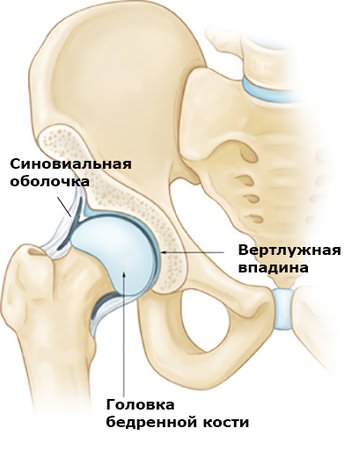
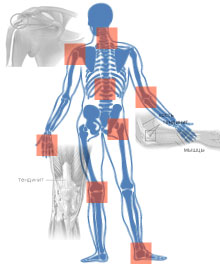
During training sessions, the musculoskeletal system is subjected to quite significant mechanical stress, therefore, intense training sessions can lead to microtrauma (minor tissue damage), especially muscles and tendons, as well as a network of capillaries and connective tissue. Under the condition of normal rest, tissues not only heal, but also adapt (remodel) their structures so that they can more easily withstand mechanical stress during training and competitive activities. In the case of inadequate rest, the fatigue process exceeds the remodeling process, as a result of which the microtrauma gradually accumulates and turns into the so-called chronic or fatigue injury. Tendinitis is the most common fatigue injury in sports.
Tendinitis(lat. tendo - tendon) - syn. tendinosis- one of the components of a number of states. Most often, this is a degenerative process in the tissue of the tendon itself. The initial reaction of the tendon to chronic overload is swelling and microscopic breakdown of collagen.
with changes in the surrounding mucosa. In more severe cases, mucosal degeneration develops, where the central portion of the tendon is replaced by a jelly-like mucus deposit.May also take place inflammatory process in the area of tendons covered with a synovial membrane
(tenosynovitis). The synovial sheath of the tendons may show a true inflammatory response with shedding of transudate or exudate containing inflammatory cells and may be reactive due to overuse, immediate injury or inflammatory conditions.Causes of tendinitis
paid gynecologistThe most common reason tendonitis is increased physical activity and microtraumatization. During work, the places of attachment of muscles to the bone skeleton experience a large load. If this load is regular and excessive, tendon tissues, cartilage tissue in places of attachment it undergoes degenerative changes. Small areas of necrosis appear
(tissue necrosis), areas of fatty degeneration of tendon and cartilage tissue, deposition of calcium salts. Calcium salt deposits most often occur in the place where a micro-rupture of the tendon fiber once occurred. Calcium salts are a solid formation and, in turn, can injure surrounding tissues.With prolonged physical exertion, the cartilaginous tissue between the tendon fibers is reborn, ossifies, bone growths appear - spikes, osteophytes
and bone spurs. All these processes lead to tendinosis.tendinoses or tendinopathies indicate an excess load on this muscle. Most often tendinoses arise in sportsmen, since their loads on the muscles are prohibitive.
Also to tendinosis can lead to rheumatic diseases: rheumatoid arthritis
, gout , reactive arthritis . Most often tendonitis get sick athletes and manual workers.Symptoms of tendinosis
Pain with active movements involving the affected tendon, while similar passive movements are painless. On palpation
along the affected tendon. Hyperemia, hyperthermia over the area of the affected tendon. Crackling or crackling ( crepitus) when moving the tendon, heard at a distance or only through a phonendoscope.Features of tendititis of different localization
Lateral epicondylitis
Also known as tennis elbow
" - This tendinitis extensor muscles of the wrist (brachioradialis, long and short radial extensors of the wrist) Pain on palpation of the zone of the lateral epicondyle of the humerus. "Tennis elbow" is perhaps the most common fatigue stress injury of the elbow joint. This type of damage occurs not only in tennis, but also in table tennis, badminton, golf, etc.The main pathology is recurring injury extensor muscles, predominantly the short radial extensor of the hand, which leads to fibrosis
in response to chronic irritation. Other muscle groups may also be affected, such as the extensor digitorum common, extensor radialis longus, and extensor carpi ulnaris. According to scientists, about 45% athletes who play tennis daily, or 20% who play 2 times a week, may suffer from lateral epicondylitis at certain periods. Most often this injury observed in persons over 40 years of age.clinical features. The pain is usually felt in the lateral part of the elbow and may radiate up along the shoulder or down along the outer part of the forearm. Athletes they may gradually feel weakness in the area of the hand and experience difficulty in lifting the cup, twisting the laundry, and even shaking hands. Usually there is a clear focus of pain over the lateral epicondyle and on the outer part of the elbow when the bent middle finger is extended against resistance. An x-ray of the elbow joint usually does not show significant changes, and only magnetic resonance imaging helps to clarify the location and nature of the damage.
Medial epicondylitis
epicondylitis - tendinitis flexor and pronator muscles of the forearm (pronator round, radial and ulnar flexors of the wrist, long palmar muscle). This is a chronic irritation of the medial epicondyle with reactive inflammation of the site of attachment of the flexor muscles. main reason it is usually an excessive hallux valgus. Medial epicondylitis occurs in various sports:- Golf. In that sport it occurs most often, there is even the concept of "golfer's elbow".
- Baseball.
- Tennis. Players who flex their wrist with significant force while serving or hitting a bounced ball may experience significant "overload" of the forearm muscle group.
- In others sports a significant load falls on the flexors of the forearm - table tennis, squash, gymnastics.
De Quervain's disease
De Quervain's disease is a stenosing tendovaginitis of the short extensor and long abductor muscles of the thumb, accompanied by narrowing of the I canal of the dorsal carpal ligament. With this pathology, the following symptoms are observed: pain during extension and abduction of the thumb, pain during palpation of the styloid process of the radius. Also, de Quervain's disease is determined by a positive Elkin test. This test consists of bringing the tip of the thumb together with the tips of the index and little fingers. If at the same time the subject feels pain, the test is positive.
Elbow styloiditis
Another name is stenosing tendovaginitis of the extensor elbow of the hand. Accompanied by narrowing of the VI canal of the dorsal ligament of the wrist. Symptoms: pain in the area of the styloid process of the ulna, swelling in the same area.
Tendonitis of the patellar ligament
chronic tendonitis patellar ligament is more commonly known as jumper's knee
". In most movements in various sports the quadriceps muscles function in an eccentric manner. On initial stage disease touching the tendon causes pain, but in more severe injuries tendon swelling may occur. With significant degeneration, mucous degeneration develops in the central part of the tendon. At this stage, as a rule, surgical intervention is necessary. The degenerative part of the tendon is excised, reconstructing the remaining tendon. In the patellar ligament, this degeneration occurs at the lower pole of the patella or distally at the attachment to the tibial tuberosity.Initially athlete Complains of pain after exercise. Gradually, the pain is felt during classes, and over time, it does not leave him even during rest. During examination, pain can be caused by active extension, as well as direct pressure on the affected tendon. To identify possible intratendinous calcification, an x-ray should be taken, using the method of magnetic nuclear resonance. The reaction in the tendon is not due to a biomechanical deviation, but to an excessive load, therefore, treatment should include a change in the magnitude of the load. Cold, ultrasound and nonsteroidal drugs. It is advisable to stretch the quadriceps muscles, as well as use eccentric strengthening exercises. Concentric strength exercises should be avoided. Corticosteroid injections are contraindicated in this condition because direct injection into the tendon weakens the tendon and can cause patellar tendon rupture. If the disease has reached the stage when there is significant swelling of the tendon, as a rule, surgical intervention is recommended.
There are many reports in the literature of patellar ligament rupture, especially in weightlifters. It should be noted the close relationship between the use of anabolic steroids and this trauma. At this stage, it is not known whether anabolic steroids really have such a negative effect on the tendons.
Tendonitis of the quadriceps tendon
Degenerative changes can occur in the area of attachment of the tendon of the quadriceps muscle to the upper pole of the patella. Pathogenesis
resembles the one that takes place in tendinitis ligaments of the patella, but this disease is less common in young athletes. At athletes tendon rupture often occurs with older age, which is most often due to a degenerative disease.Post-tibial tendinitis
Tendinitis tibialis posterior or post-tibial tendinitis(tibialis; anat. tibia tibia) is a stretch of the tendon of the posterior tibial muscle, which is located along the inside of the lower leg and inner ankle. Violation of the function of this muscle, which supports the arch of the foot, leads to the development of flat feet. In turn, flat feet lead to overpronation.
foot pain, heel pain, arch pain, plantar fasciitis and heel spurs. With post-tibial tendinitis The pain can be aggravated by carrying heavy weights, as well as while running.Post-tibial tendinitis develops with constant overstrain of the leg muscles. Long-term pronation of the foot with flat feet can lead to dysfunction of the posterior tibial muscle. muscle strain, chronic microtrauma, tendon strains accumulate, leading to the development tendinitis. In the initial stage of the disease, swelling and pain disappear after a short rest, but when the process becomes chronic, discomfort becomes permanent.
treatment includes wearing orthopedic shoes with a reinforced heel counter and arch support to relieve tension on the tibialis posterior tendon and prevent overstretching of the plantar fascia. In order to reduce shock loads, arch supports are recommended for the patient. They are made from materials with good shock-absorbing properties.Treatment of tendonitis
At an early stage, conservative treatment is usually recommended to relieve the inflammatory process: rest, cold, ultrasound, laser or magnetic physiotherapy, non-steroidal anti-inflammatory drugs, systemic enzyme therapy drugs, etc.
Rest is necessary during the acute stage, but exercise(physical therapy) should be started as early as possible. Stretching and strengthening exercises are recommended. It is possible to use special fixing devices (bandages, bandaging). Attention should also be paid to the specific sport, as well as the use of various simulators in order to reduce the degree of load.
When examining patients with chronic tendonitis often use the method of magnetic nuclear resonance. Areas with abnormal impulses indicate a degenerative change in the tendon and the need for surgical intervention. tendinous area subjected to treatment by excision of hypertrophic degenerative tissue, followed by repair and treatment in accordance with the methods that are used in acute rupture. Postoperative treatment is the same as after recovery.
Surgical intervention is recommended if the program of physiotherapy procedures and various conservative methods of treatment have been unsuccessful, in the presence of signs of stenosing tendinitis or Osgood-Schlatter disease. Dissection or partial excision of tendon aponeuroses, as well as excision of scar tissue, is performed. Rehabilitation after surgical intervention usually lasts 2-3 months and includes the gradual use of stretching and strength development exercises. Return to sports activities resolved after 3-4 months.
References
- Sports injuries. Clinical practice of prevention and treatment / under total ed. Renström P.A.F.H. - Kyiv, "Olympic Literature", 2003 .



